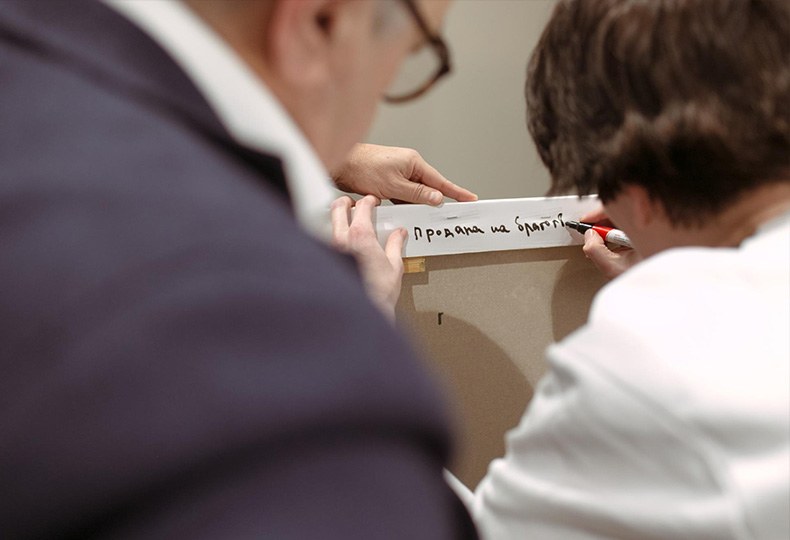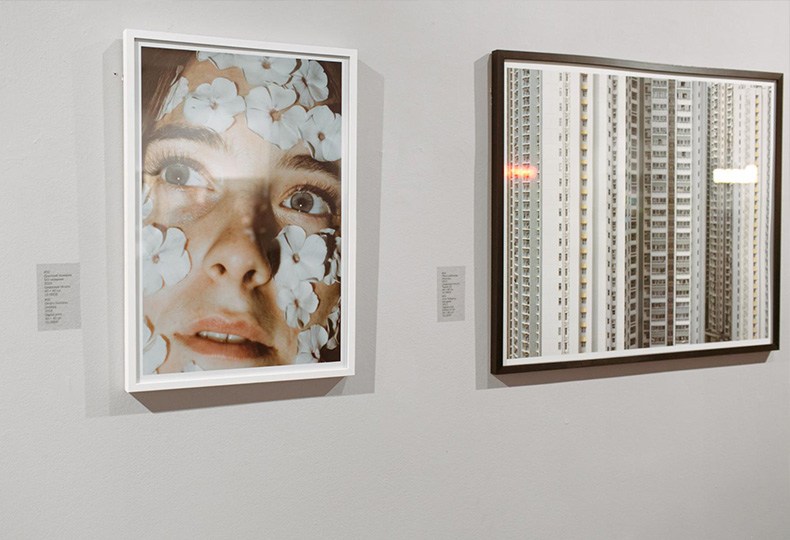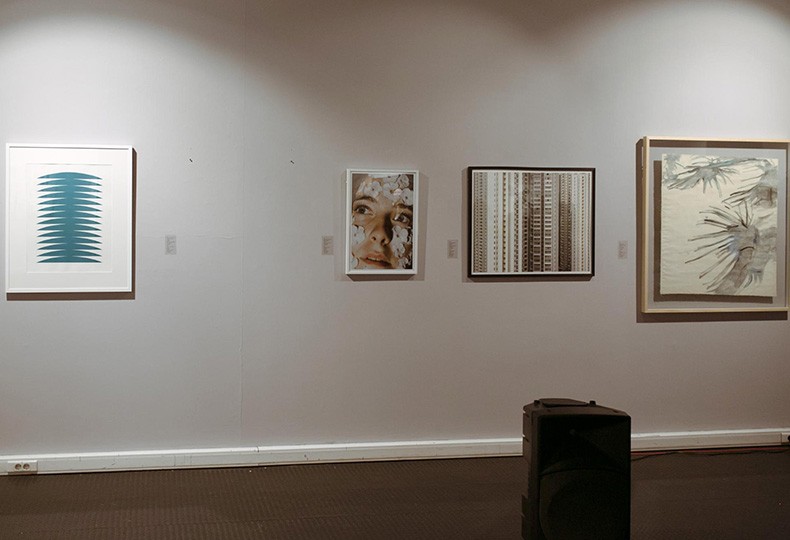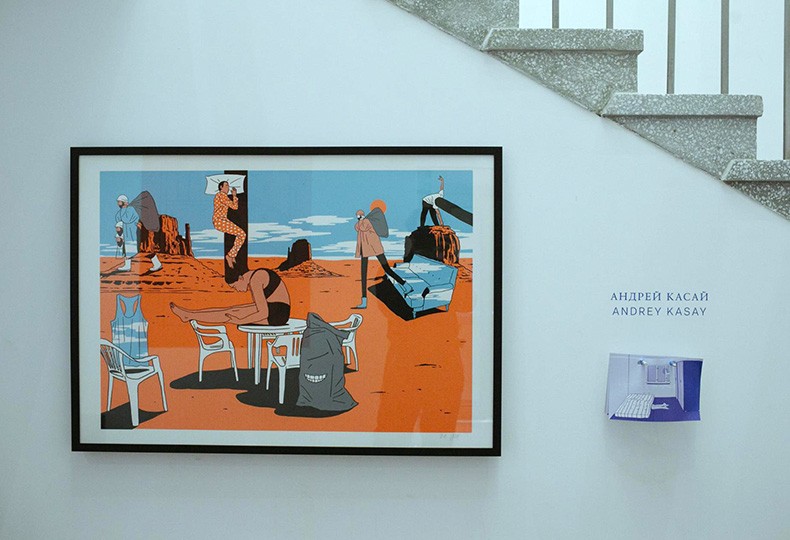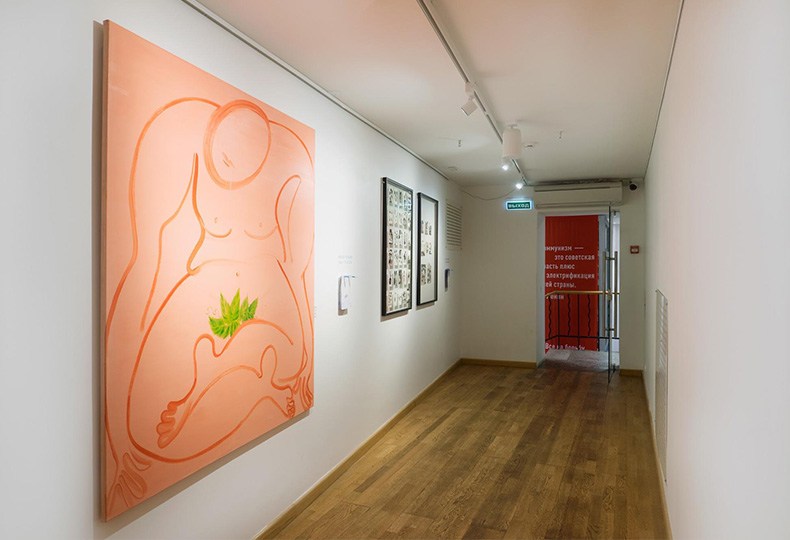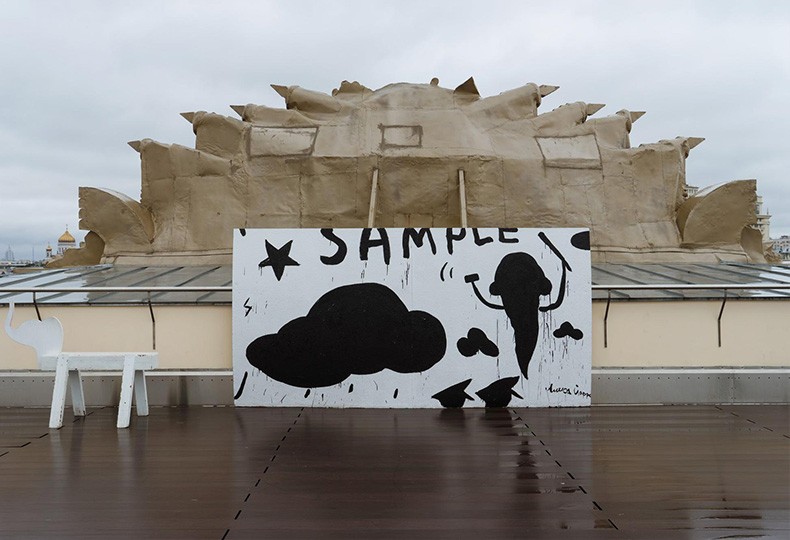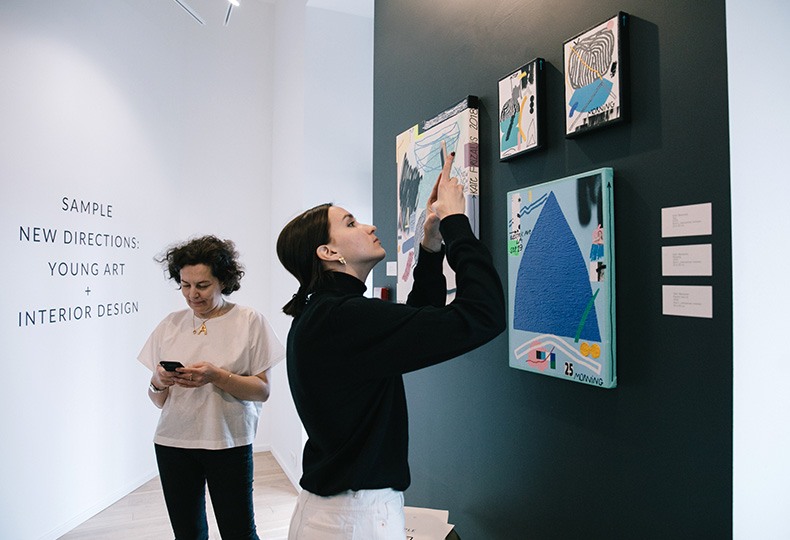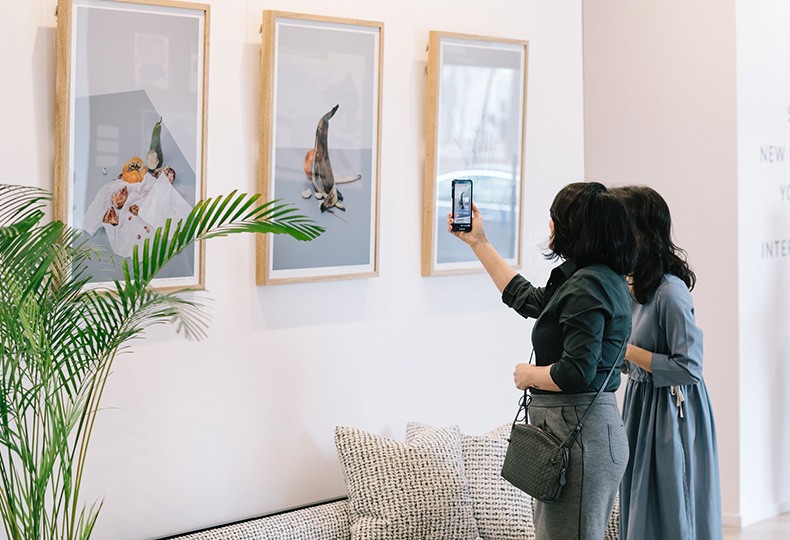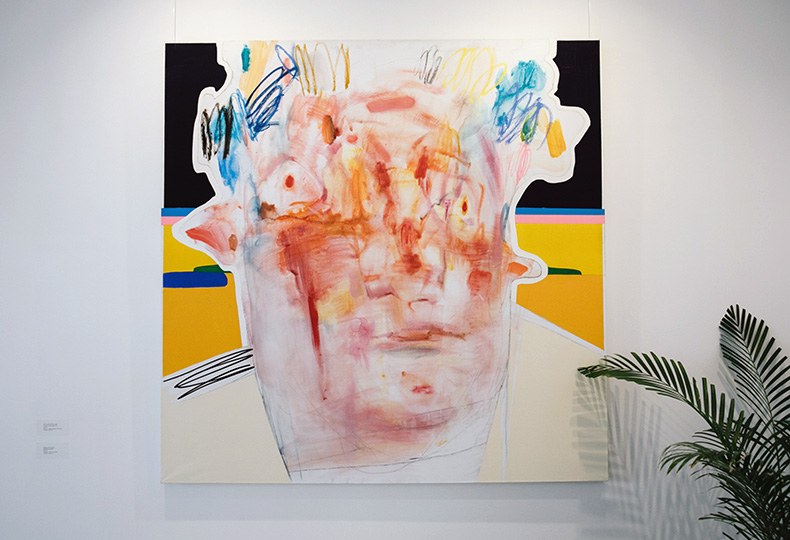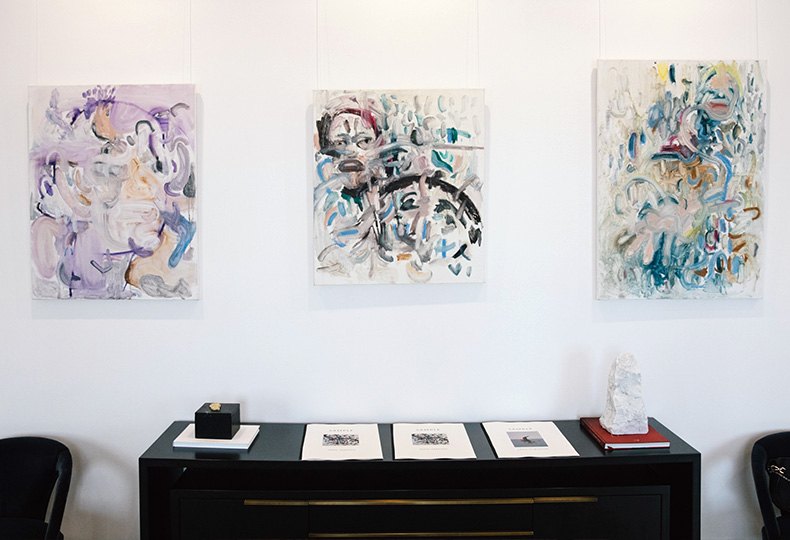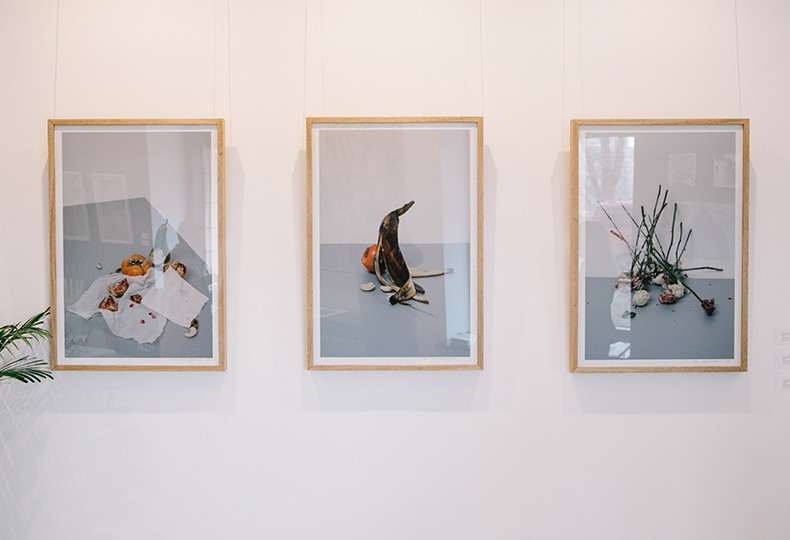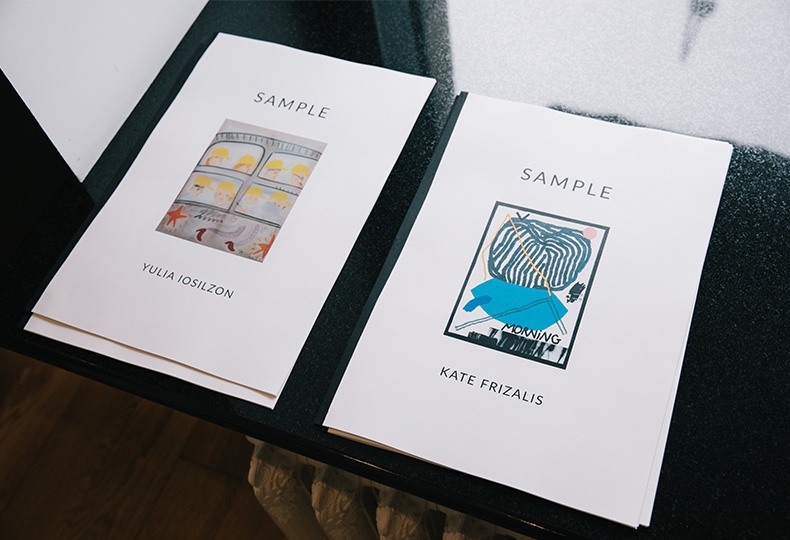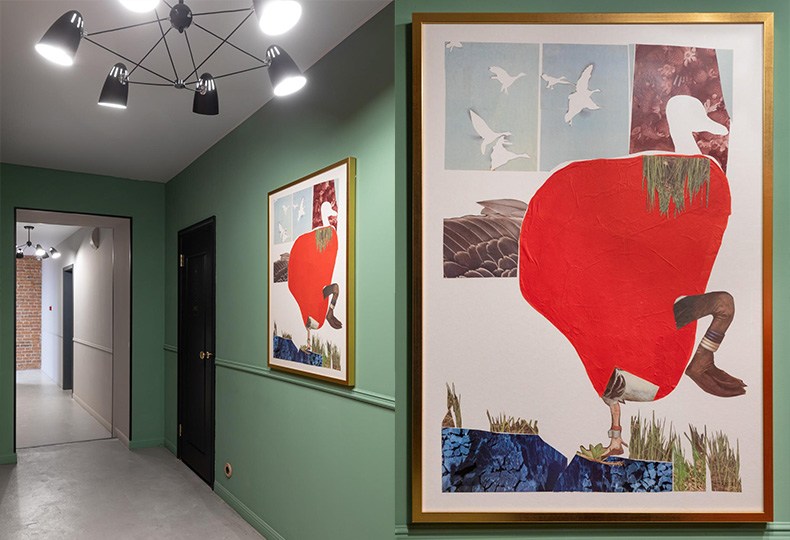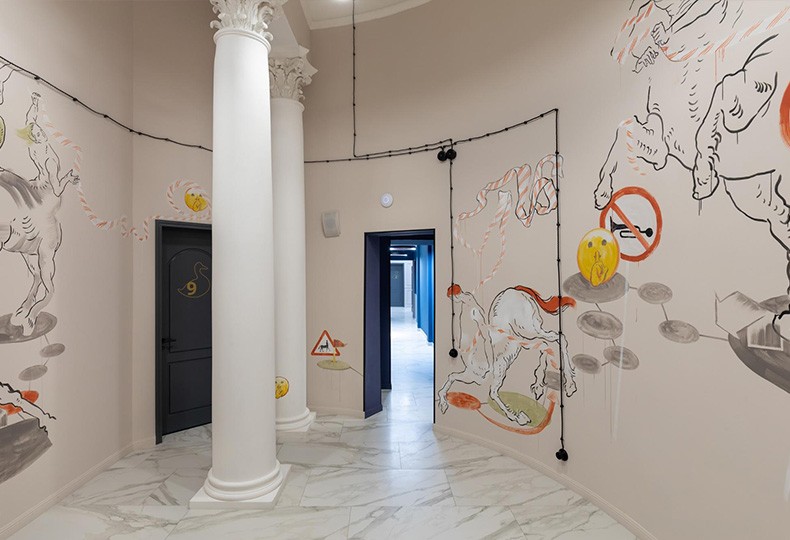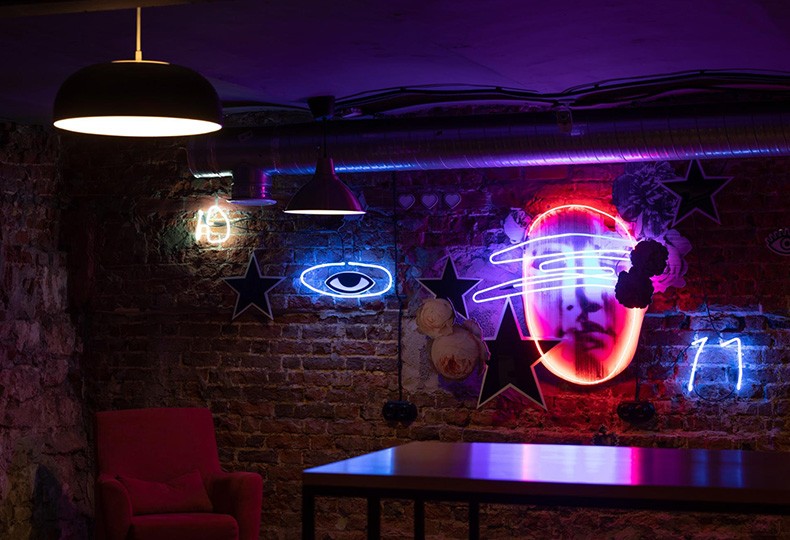
SAMPLE Founders: World of Contemporary Art Is Like Street with Ten Bars
SAMPLE is the multidisciplinary project, whose main goals is to dismantle a stereotype on unavailability of the contemporary art, facilitate communication between the young artists and the collectors, as well as to ‘grow’ the new collector generation. The project was founded in 2016 by Anna Naumova and Sofia Simakova, while in 2018 Alexandra Lekomtseva also joined their ranks. Since its very beginning, SAMPLE has already arranged 6 auctions, has held 3 exhibitions and has sold more than 600 works. So, we invited SAMPLE founders to discuss the fashion in and for the art, the modern collections and the changes of the contemporary art market.
Tell us about the creation of the SAMPLE project. How did it start?
Sofia Simakova: I am a curator, and Anna Naumova is an artist, so she came up with idea to create this project, which is primary intended to support the artists. We realized that there were a lot of young talented artists that simply didn’t know how to start displaying and selling their works, and there were also the people willing to buy the original pieces, rather than the simple poster for interior decoration that just could not afford the painting for $10,000. The idea is that all these people needed a kind of medium, moderator, intermediate between them, and this was exactly the reason, why we started SAMPLE. Of course, since then the project has undergone some changes.
HILLEL X SAMPLE AUCTION AT TRIUMPH GALLERY
SAMPLE project was founded around three years ago. How has the Russian art market changed during this period?
Alexandra Lekomtseva: Today, there are many emerging similar project and much more potential buyers. I’d say that we witness a growing interest towards art, and the public starts to realize that having the art objects on the walls of your apartment is a basic human need for aesthetics, rather than the matter of luxury. The ‘average basket’ is also getting smaller. Both new and well-established collectors are willing to spend their money on the young art, they are interested to invest into young artists and watch their development.
IN GENERAL, THE PROCESSES WITHIN THE INDUSTRY HAVE BECOME MORE INDEPENDENT.
Alexandra Lekomtseva: Today, in order to arrange exhibition or sell the work, you no longer need approval of major galleries or specific individuals. The community is growing, and now it is mainly represented by the young people willing to help each other for the purpose of mutual benefit and the common good. Various initiatives unite the artists, the curators, the exhibition managers and the art theorists. Such platforms give a head start to those who want to build their carrier in the world of art, while only around three years ago, you would have to work as trainee at the gallery or sell the tickets at museum.
You make a bet on the young artists with foreign education (please correct me, if I am wrong). Is academic education important for the artist?
Sofia Simakova: ere, at SAMPLE project, we have absolutely different authors. The European fine arts education in the contemporary art field is significantly better than in Russia, but such education is rarely of academic nature. In my opinion, the best possible combination is when the author had obtained the academic education, so he or she has a firm hand, knows the lows of composition, et cetera, and then has studied at the European institute with more modern attitudes. There, the students develop so called ‘art awareness’, the freedom of self-expression and study some theoretical foundations. Later, many such people dare to experiment, but with academic background any such experiments look more confident and professional regardless of how bold and daring they are.
EXHIBITION OF WORKS BY SAMPLE ARTISTS AT THE GORKY PARK MUSEUM
Is it possible to forecast the future success of the beginner artist? What factors do you consider as the main predictors of such success?
Anna Naumova: Yes, it is. There are some markers that typically revel someone’s talent. And if we talk about the bare facts, then these are the education, the preferred technique of the author and surprisingly his or her communication skills and willingness to work hard.
How are the modern collectors? How would you describe them?
Alexandra Lekomtseva: The true collectors and the people who buy the art to decorate their interiors are two completely different kinds of person, even if the latter possess more expensive art works. The collections usually follow a certain logical principle: these may be the works by specific authors, of specific age or technique. Although, in our opinion, such consistent collector practices are slowly vanishing, so the more and more deals are made in impulsive manner, based on ‘I like this’ principle. Besides that, we live in the age of Internet, where the one can explore the artists from the whole world and make purchases online, therefore the collections are becoming more and more diverse. We have an opportunity to watch and communicate with our customer during auctions, and they are very cool people. These are the people who genuinely enjoy buying the objects of art.
What are the benefits of auctions as compared to buying art objects online?
Anna Naumova: First of all, at the auction you can actually see the work live, view how it looks within the space, consider it in detail, compere the scale of the piece with the dimensions of place, where you are going to put it at home. Furthermore, all works are sold in the ready-to-use format, which makes it much simpler to handle it. Another benefit is that during auctions we usually tell not only about the artist him- or herself, but also present the specific piece of work. And most importantly, the auctions are very exciting, almost gambling-like process!
POP-UP EXHIBITION BY SAMPLE AT BOOROOM GALLERY HELD UNTIL MARCH 23RD
How are you competitors, and what is your attitude to competition in general?
Sofia Simakova: We don't have competitors as such. Yes, there are projects with similar ideas, but we are the only place, where you can find, for example, the London Royal College graduates.
SAMPLE ISN’T THE FINE ART STORE. THIS IS CURATOR’S CHOICE, WHICH BEARS A SIGNIFICANT MARK OF YOUR TASTE AND PERCEPTION.
Sofia Simakova: Unlike other similar platforms, we don’t those who are considered relevant or ‘trendy’, but those who we genuinely like, whether it is a artists that already had three personal exhibitions or a Bachelor program student. It is rather hard to express our attitude towards competition. I’d say it’s great that there more and more such projects – it means that the industry is growing, so the interest towards this industry is growing as well. The world of contemporary art is like a street with ten bars on it. They don’t compete bur rather help each other: a person has few drinks at one place, then goes to the second bar, to the third bar, et cetera. The enthusiasm is maintained by heated by various processes and events regardless of who arranges them. Anyway, competition is a healthy state of economy.
In your opinion, is there a fashion for art? And if yes, then what is trendy right now?
Sofia Simakova: The fashion for art and the fashion in art are two completely different fashions, Here, in Russian, all trends develop with delay, but are three times more intense. There was a moment, when the Venice Biennale and Art Basel Miami Beach became the favorite spots for Russian ‘assault force’. It has become a new fashion to know and collect the art, but even more trendy is visiting exhibitions, art fairs and Biennale, while bombarding the social media with numerous posts featuring hashtags like #intellectual, #contemporaryart, #myculturalweekend, et cetera. But this won’t last long, Seems like, the fashion for theater is slowly substituting the fashion for visual arts: ‘Have you been at Nabucco?”, “Are you going to Salzburg this year?”.
ARTISTIC WORKS AT SAMPLE ONLINE GALLERY AT NEW MOSCOW STRAWBERRY DUCK HOSTEL THAT RECENTLY OPENED AT XIX CENTURY MANOR.
Sofia Simakova: The completely different thing are the trends in art. These may be influenced by various factors from new emerging technologies, as it happened in the age of ubiquitous video art and alter the kinetic art, to the certain political and social phenomena.
TODAY, THE MAIN ATTRIBUTE OF CONTEMPORARY ART IS ITS GLOBALIZATION.
Sofia Simakova: Just remember, previously you could look at the works and easily recognize an artist from Korea, Russia or United Kingdom, while now these national differences are barely perceivable. Another trend is a king of nostalgic feelings for Modernism: three times buried and resurrected paintings, books by artists, mass market graphics, aquarelle. Another interesting thing is the how the industry in currently changing itself. After Instagram has become popular, the artists rarely need to sign contracts with the galleries, they have absolute freedom to promote and sell their works without institutional mentors. Of course, this obviously affect the general situation in the industry, but the phenomena is sill to new to make any definite conclusions.
Unlike paintings and graphics that are often purchased for private home interiors, the sculpture seems to be still in lower demand. How do you think, why it is so?
Anna Naumova: It would be wrong to say that the sculpture in its classical understanding is unpopular, it just requires much more space, a kind of base or a niche. In general, sculpture and ceramics are the growing trends of 2019. The ceramic items are becoming more and more popular, They have overcome their utility nature and now claim their place among the works of art and interior design. Here, at SAMPLE, we have a sculptor, Appolinaria Broche, who creates beautiful ceramics and is going to add new sculptures to the project this year.

